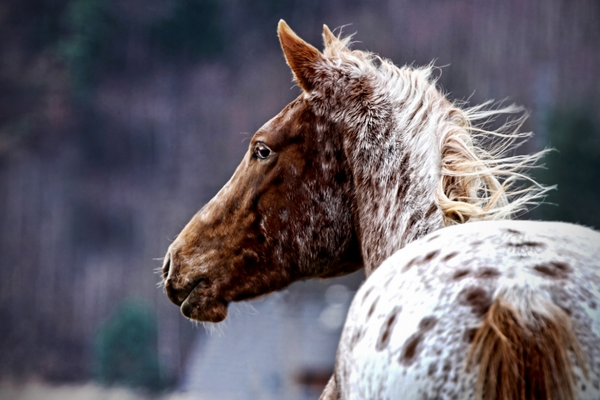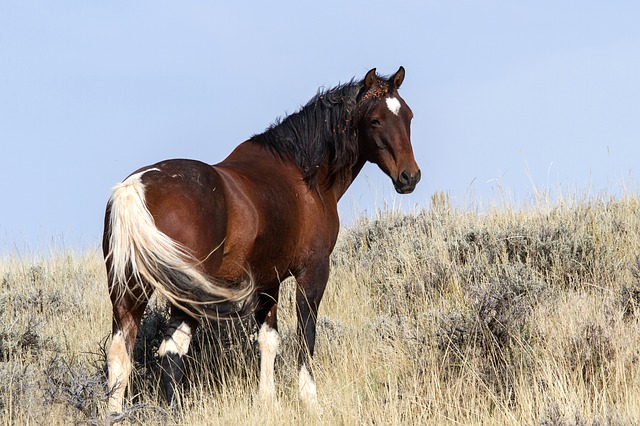Breed Spotlight: Friesian Horse
Friesian horses (also known as the Frizian) are a beautiful breed of horses that originated in the Friesland region of the Netherlands.
This breed has a conformation that resembles a light draught horse, but they are graceful and nimble for their size.
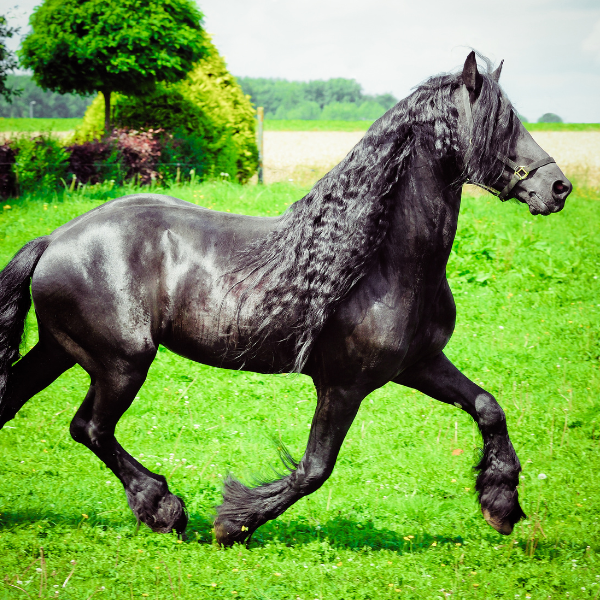
Known for their striking black coats, flowing manes and tails, and graceful movements, Friesians are highly sought after for dressage, carriage driving, and other forms of equine sports.
History of the Friesian Breed
Historically, during the Middle Ages, Friesian horses were in high demand as war horses throughout continental Europe.
Their size enabled them to carry knights in armor during the Early and High Middle Ages.
In the 18th century, the Friesian was crossbred with Andalusians, creating a lighter, more elegant horse that was used for carriage driving.
However, as heavier, draught-type animals were needed in the Late Middle Ages, the Friesian breed nearly became extinct on more than one occasion.
A group of dedicated breeders worked tirelessly to preserve the breed, and by the 1980s, the Friesian was once again a thriving breed.
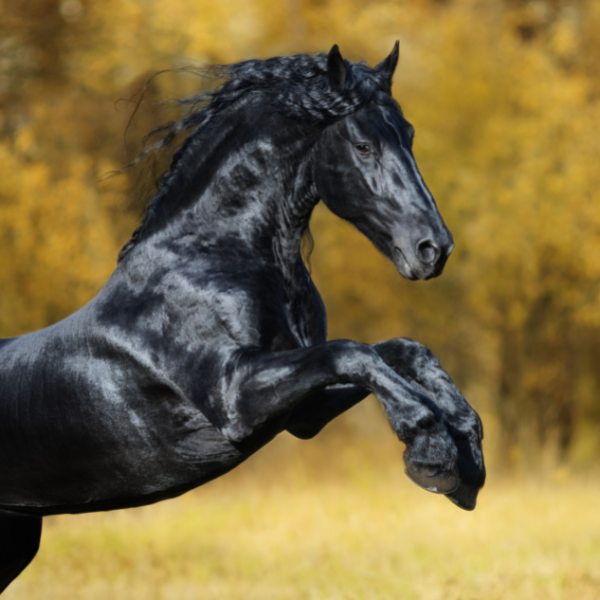
Appearance of Friesian Horses
When it comes to Friesian breed characteristics, this breed is most often recognized by its black coat color.
However, some bloodlines do carry the “red” (“e”) gene, which can occasionally lead to chestnut coat color.
Chestnut color is generally not accepted for registration for stallions, though it is sometimes allowed for mares and geldings.
A chestnut-colored Friesian that competes is penalized.
Discoloration from old injuries or a black coat with fading from the sun is not penalized.
The chestnut allele, a recessive genetic trait in the Friesian, does exist; in the 1990s, two mares gave birth to chestnut foals.
For a stallion to be accepted as breeding stock by the FPS studbook (Friesch Paarden Stamboek), it must pass a rigorous approval process.
The Friesch Paarden Stamboek began to attempt breeding out the chestnut color in 1990, and today stallions with genetic testing indicating the presence of the chestnut or “red” gene, even if heterozygous and masked by black color, are not allowed to register.
White markings of any kind are rare in Friesians, with most registries only allowing a small star on the forehead for purebred registration.
The Friesian stands on average about 15.3 hands, although it may vary from 14.2 to 17 hands at the withers.
Mares or geldings must be at least 15.2 hands to qualify for a “star-designation” pedigree.
The breed has a powerful overall conformation and good bone structure, with a “Baroque” body type.
Friesians have long, arched necks and well-chiseled, short-eared, “Spanish-type” heads.
They have powerful, sloping shoulders, compact, muscular bodies with strong, sloping hindquarters and low-set tails.
Their limbs are comparatively short and strong.
Friesians have a long, thick mane and tail, often wavy, and “feather”—long, silky hair on the lower legs—deliberately left untrimmed.
They are known for their elegant, floating movements, which make them ideal for dressage and other forms of riding.
Today, there are two distinct conformation types of the breed: the “baroque” type, which has the more robust build of the classical Friesian, and the modern, “sport horse” type, which is finer-boned.
Both types are common, though the modern type is currently more popular in the show ring than the baroque Friesian.
However, conformation type is considered less important than correct movement.
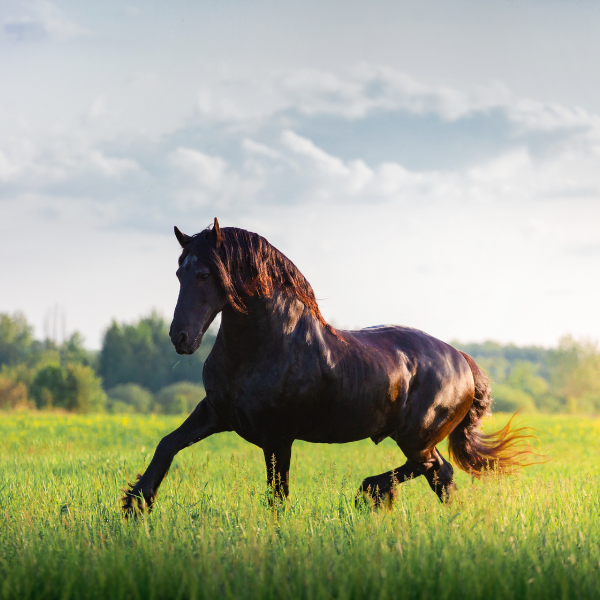
Temperament and Personality
Friesians are considered willing, active, and energetic, but also gentle and docile.
They are known for their gentle and affectionate personalities.
They tend to have great presence and carry themselves with elegance.
They are highly intelligent and responsive to their owners, making them easy to train.
They have a calm and willing disposition, which makes them an ideal choice for novice riders.
Friesians are also known for their strong work ethic and their ability to excel in a variety of equine sports.
They have a natural aptitude for dressage, thanks to their elegant movements and their willingness to learn.
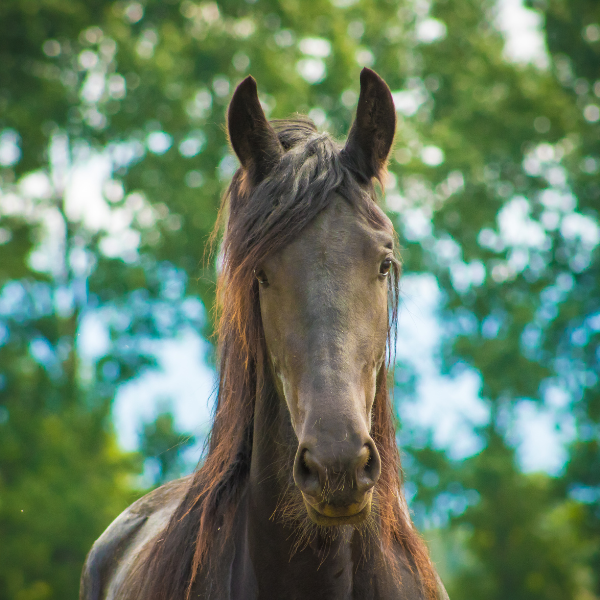
Uses for Friesian Horses
Friesians are used for a variety of equine sports, including dressage, carriage driving, and pleasure riding.
They are also popular for use in movies and television, thanks to their striking appearance and calm temperament.
Friesians are an ideal choice for dressage due to their elegant movements and their ability to perform intricate maneuvers.
They are also a popular choice for carriage driving, thanks to their strength and endurance.
Friesian horses are a unique and beautiful breed, with a rich history and a loyal following. T
hey are known for their striking appearance, gentle personalities, and their ability to excel in a variety of equine sports.
Whether you are a novice rider or an experienced horse enthusiast, the Friesian is an excellent choice for anyone looking for a beautiful and talented equine partner.
